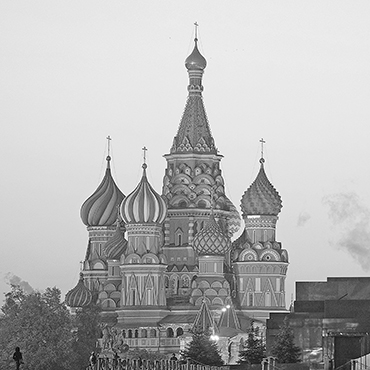A VIGILANTE MURDER IN RUSSIA'S SECOND CITY?
A prominent activist was found stabbed to death in St. Petersburg just days after her name appeared on an online "death list." Yelena Grigorievna had been a frequent participant in protests calling for LGBT rights and freedom for political prisoners. Prior to her death, her name was one of many published on a Russian website that targeted activists and called for vigilante action against them. Although the website was removed by authorities, fear remained high among LGBT groups, and a friend of Grigorievna's wrote that she had received threats before she was murdered. (London Guardian, July 22, 2019)
THE MILITARIZATION OF THE ARCTIC CONTINUES
Russia's Northern Fleet is establishing a new air squadron in the region. The deployment of the squadron, which will be primarily made up of Su-34 fighter jets, is another way in which Moscow is seeking to expand its presence in the Arctic and protect its access to the Northern Sea shipping route that runs along the Arctic coast. The Su-34's 4,500km range and the powerful supersonic cruise missile that it carries make it an ideal candidate to defend nearly all of the Northern Sea Route, according to Russian military officials. So far, Russia's years-long push to bolster its Arctic presence has also included the founding of a new northern strategic command, the establishment of additional bases, the opening of new air strips, and the installation of extensive advanced radar and surveillance equipment.
Meanwhile, the logistics required to support Russia's growing presence in the region are forcing the Northern Fleet to ramp up its normal supply schedule to its outposts. Since all supplies must be delivered by boat, and ice obstruction prevents normal passage to these outposts after October, all deliveries must be completed before October. Already, 17,300 tons of the total 37,000 tons planned have been delivered to 60 bases and units in the Arctic, 48 of which are in "remote and hard-to-reach places." (The Moscow Times, July 22, 2019>
A NEW ROUND OF RUSSIAN NAVAL AGGRESSION
Kyiv is crying foul after a Russian destroyer reportedly entered a restricted maritime zone during a major international naval exercise. The incident took place during "Sea Breeze," a multilateral naval exercise in the Black Sea co-hosted by the United States and Ukraine and involving 19 different countries. According to the Ukrainian Navy, Russia's Smetlivy destroyer sailed into an area that had been closed off for the drills, and failed to respond in compliance with maritime law to the attempted hails of a nearby Ukrainian frigate.
Despite video and photographic evidence suggesting that the Smetlivy was indeed in the vicinity of the "Sea Breeze" exercises, Moscow denied at first that the incident took place; after a few days, however, the Russian Defense Ministry admitted that the Smetlivy was monitoring the activity of a U.S. warship participating in the exercises. The incident fits a pattern of growing Russian provocations and willingness to act aggressively towards U.S. and NATO vessels in the Black Sea, and comes on the heels of a near-collision between another Russian destroyer and U.S. warship in the Western Pacific earlier this summer. (Polygraph.info, July 22, 2019)
SEOUL FIRES A WARNING SHOT
A Russian military plane patrol turned provocative when it violated South Korean airspace in late July, prompting the South Korean military to scramble its fighters and fire warning shots in response. According to Seoul's account of the incident, two Russian Tu-95 bombers and an A-50 early warning and control aircraft were flying through South Korea's air defense identification zone (ADIZ), accompanied by two Chinese bombers. After minutes inside the ADIZ, the A-50 entered South Korean airspace. The scrambled Korean F-16s fired flares and machine gun rounds as they escorted the foreign aircraft out, but minutes later the A-50 re-entered South Korean airspace.
In all, the South Korean F-16s fired 360 machine gun rounds in warning. Seoul claims that incident was the first time since the Korean War (1950-53) that a foreign military plane had conducted such a violation, and promised a "much stronger" response should it happen again. Moscow, for its part, maintains that the aircraft were on a routine flight, denied that any warning shots had been fired, and accused South Korean forces of "aerial hooliganism." (Military Times, July 23, 2019)
Want these sent to your inbox?
Subscribe
Russia Reform Monitor No. 2327
Related Categories:
Democracy and Governance; Energy Security; Europe Military; Human Rights and Humanitarian Issues; Russia; Ukraine
